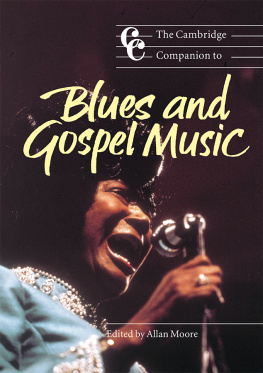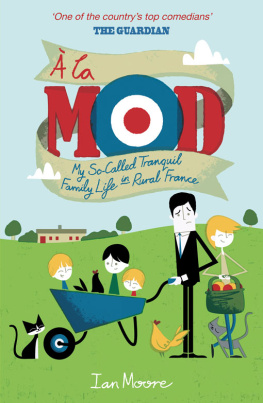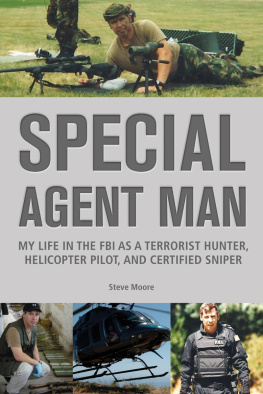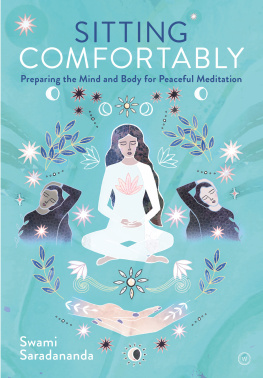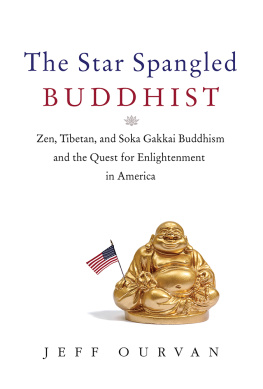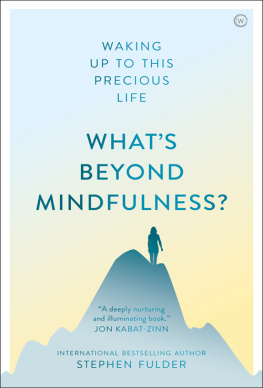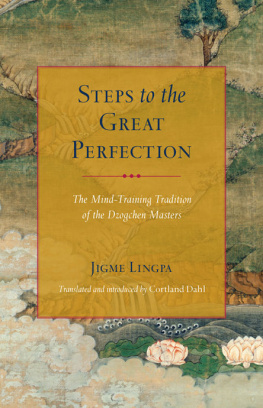ALSO BY DINTY W. MOORE
The Emperors Virtual Clothes
THE ACCIDENTAL BUDDHIST
Mindfulness, Enlightenment, and Sitting Still
DINTY W. MOORE

Algonquin Books of Chapel Hill
TO MARIA RAPHAELLA ROMASCO MOORE
TEACHER, DAUGHTER, AND FRIEND
ACKNOWLEDGMENTS
MY DEEP THANKS to the many Buddhist practitioners who offered assistance during the course of this project, including Linsi Deyo and Patrick Clark, Dharman Craig Presson, Mary Pattison, Bill Butler and Jean Giddings, Barbara and Len Seibert, Steve Heywood, Lynn Newman Mennenga, Tom and Sue Wolsko, and Jack Hatfield. And gassho to my patient teachers: John Daido Loori, Geshe Lobsang Tenzin Negi, Father Robert J. Kennedy, Bhante Henepola Gunaratana, and Dai-En Bennage. I am grateful as well to Helen Tworkov for her kindness, and to Allen Ginsberg for permission to use an excerpt of his poem The Ballad of the Skeletons.
During the time I worked on this book, I received significant support from the Institute for Arts and Humanistic Studies at Pennsylvania State University, from Kjell Meling, and from the Penn State Altoona Campus Advisory Board.
A special thanks to Robert Rubin for all he has taught me. May his own journey go well.
And finally, for her patience, guidance, and love, a deep bow of gratitude to Renita Romasco.
There is something in other peoples religions that is
incomprehensible.
Huston Smith
Im astounded by people who want to know the universe when its hard enough to find your way around Chinatown.
Woody Allen
PRELUDE
WHEN I WAS young, I thought for a while that I might actually become a priest. I was raised in a town full of Catholics and endured twelve years of Catholic school, so the idea was certainly bouncing around. The priesthood, after all, is the ultimate calling, every Irish-American mothers dream for her son. I had a few nuns in my family, a priest related by marriage, and I was painfully awkward around girls, so why not?
It turned out, of course, that I didnt have a true calling, or any calling, but there were moments when I thought I might. Most prominent among them was a weekend in early high school. I was barely fifteen, searching for something about myself more interesting than being the schools best speller, and so agreed not only to participate in a Catholic Youth retreat weekend, but to lure ten or so of my classmates to come along.
I was attending an all-male Catholic prep school in my hometown, and the main selling point for the retreat was that we would be joined by an equal number of saintly young girls from Mercyhurst and Villa Maria. Three days and two nights in a monastery, along the scenic shores of Lake Erie, with only a few doddering monks as chaperones. Anything could happen.
But none of it did. They watched us like hawks, and there were so many locked doors and thick walls between the girls dorm and the boys dorm that it would have required heavy machinery to break through. It was late November, and the idea of sneaking down to the lakeshore for some heavy petting was discouraged well enough by thirty-mile-per-hour subzero Canadian winds.
Instead, we were left to think and pray. The first night, we sat against the walls of a darkened first-floor hallway, listening to the Moody Blues on a record player. This was the age of guitar masses, and the monks were trying hard to be relevant, I suppose. We were supposed to be thinking about Jesus, how he had died for our sins and could save us again from our adolescent weakness, but I was thinking about Mary Margaret Flatley.
Mary Margaret was the Catholic Youth recruiter for Mercyhurst Girls High School. She was beautiful. I imagined that if she saw how devout I was, she would want to lose her virginity to me.
I prayed fervently all weekend, and when it came time to tell the assembled group about what was in our minds, I tried hard to sound deep and soulful. There is so much good inside of people, I whispered. If only we just loved one another.
Any number of young Catholic girls decided over those three days that I was a great guy, very sincere, and sweet. Not one of them, of course, had any interest in dating me. I was stuck talking to Brother Damien.
Brother Damien was the youngest of the monks, probably in his thirties, and he somehow knew that my parents were divorced, that my father had a drinking problem going back twenty years, and that I was bright, eager, and fit in nowhere. Maybe everybody is massively insecure at age fifteen, but I wore my insecurity on my sleeve. He took me aside late Saturday afternoon.
Ive been noticing you, he said, out of earshot of the others. They call you Dinty, but your name should be Peter, like the Apostle, because you are a rock. Do you know that?
I think I nodded.
You are very strong. I can sense it. There is a rock inside of you.
I nodded again. I had noticed the rock. I thought it was everything wrong about me, all my faults and deficiencies balled up and ready to explode, but Brother Damien made it sound like something good.
That rock is your faith, he went on. That rock is the faith that keeps you strong. You are going to do great things.
The monk took my breath away. He looked right at me, not averting his gaze, not nervously shuffling off. He just looked at me and waited. No priest or monk had ever paid such attention to me before. I dont think any adult had ever paid such attention to me. Brother Damien was a man of God, so in a sense, it was God paying attention to me.
We were just off the chapel, and I could hear the other monks reciting their Latin prayers. It was the most religious moment of my life.
IT TURNS OUT, though, that the rock was something else entirely. Mary Margaret Flatley took up with a lifeguard, my divorced mother married a fellow I never really trusted or liked, my high school religion teacher flunked me for asking hard questions, and my father fell off the wagon. I would walk home from school some days and see his old car bouncing off the curbs and boulevards as he threaded his way from the Danish Club to Mentleys Tavern. That hard thing inside of me turned out to be anger.
My life was a mess, a mess not even of my own making. And the situation didnt get any better, either, after God, through Brother Damien, took a direct interest in me. It just got worse.
I began to suspect that when the old priests and nuns who had been guiding me through my childhood and early adolescence said we must take the truth of Jesus on faith, what they were really saying was we have absolutely no proof of any of this, so you are pretty much on your own. Being a good kid and saying my prayers wasnt going to fix anything.
I never went back to Brother Damiens monastery, and it wasnt long before I stopped going to church at all. Stopped praying. Stopped looking for spiritual answers. God, I thought, had let me down.
NONE OF WHICH fully explains why twenty-five years later I found myself at the doorway of a different monastery. This one, as it happens, was also in New York State, but far on the opposite end. And the monks, well, this time the monks were Buddhists.
My journey, it turned out, was not quite finished.
PART 1
ZEN MIND, MUDDLED MIND
1
BUDDHA 101
Stumbling Up Monkey Mind Mountain
ZEN MOUNTAIN MONASTERY is an impressive stone structure tucked neatly onto the side of Tremper Mountain, in the Catskills, in eastern New York State.
I arrive there with a fair degree of trepidation on a Friday evening and am directed to a second-floor dorm room. There are eight bunk beds and a sink crammed into the small area. When I stumble in, Harold, a sixty-something attorney with a neatly trimmed white beard, has already marked out his territory by spreading his expensive luggage in a wide circle.
Next page

